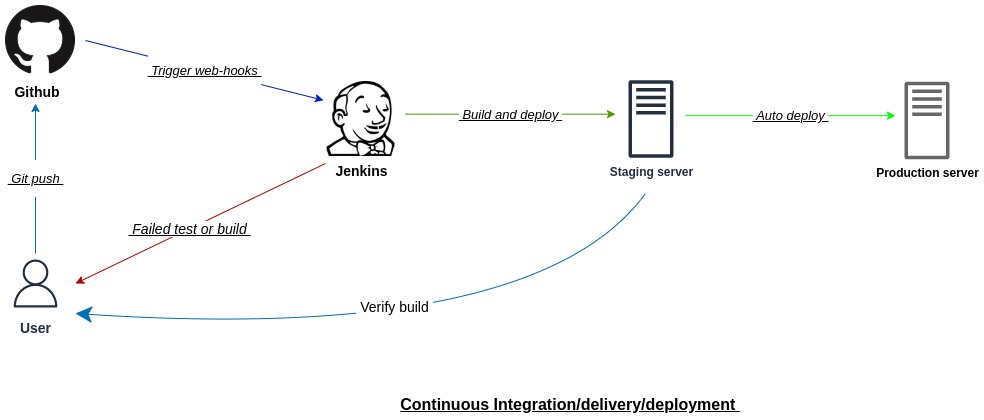The protection of sensitive data, avoidance of unwanted access, and defence against potential cyber-attacks and data breaches make secure application development extremely important.
Here are some of the security measures to consider when developing an application. It can be web, mobile, IoT, or embedded devices.
1. Security method
Strong authentication methods and making sure the right authorization is done ensure the accessibility to correct users. Multi-factor authentications, Two-factor authentication, strong password rules, least privilege access, and monitoring of access control on regular basis are some of the ways one can enhance safety measures.
Identification
Identification is the process of identifying a user. Identification is the claim of a subject of its identity.
A valid username or email, token can be known as unique identification for a user.
Authentication
Authentication is the process of proving your identity to someone. For instance, if you want to access your office, your Identity card acts as a key to recognizing that you are the right person.
Its primary goal is to provide security and protect system information. There are numerous ways to verify identity. Password/pin, embedded token or bank card, and biometrics like fingerprint/facial recognition, 2FA, and MFA are some examples. Authentication processes are always challenging or cannot easily bypass or impersonate (pretending to be someone).
Authorization
Authentication enables authorization. It is a process of granting or denying access to specific resources based on the authenticated identity. It verifies user’s permissions/privileges against a set of rules or policies to determine whether they are allowed to continue further. There are several types of authorization, including role-based, attribute-based, permission-based, rule-based
For example, a user might be granted access to certain features or functions based on their subscription level or account type.
Access control
Access control enables the authorization. Access control refers to the processes and systems that are put in place to regulate who or what is allowed to access a particular resource. It is an important aspect of security and privacy that handles access to sensitive information and protects resources from unauthorized access, it can involve physical or logical barriers.
There are several types of access control, including physical, logical, network, data, IAM, RBAC, DAC, and MAC.
2. Validations
Validation is a vital aspect of software development. It handles the data integrity and maintains security from evil inputs that could result such as SQL injection and cross-site Scripting (XSS). It also improves the user experience by providing real-time feedback to correct user input before submitting. The backend maintains data consistency that avoids application errors as it prevents unexpected and incorrect data from being processed by the application.
Furthermore, some industries are required to maintain standards for compliance. For example, healthcare providers require regulations like GDPR, HIPAA. Effective validation enables businesses to comply with these regulations and stay out of trouble financially and legally.
3. Secure data exchange and encryption
Encryption and secure data sharing are essential for safeguarding sensitive data while it’s at rest or in transit.
Data breaches can result in serious issues, such as monetary loss, harm to one’s reputation, and legal obligations. Encrypted data guarantees that it is not disclosed and is in an unrecoverable format. The encryption makes sure only the intended user, not a middleman, may read the data. It maintains the integrity of data by preventing unauthorized modifications; any alteration to encrypted data will render it unusable without the correct decryption process.
Clients and customers anticipate that their data will be treated securely. Encrypting data transfers fosters confidence in the security measures your company has in place to safeguard confidential information. This is particularly crucial for companies that deal with a lot of sensitive data.
When developing an application it is important to implement SSL/TLS for the website as it encrypts the data when transferring through the internet. You can limit web accessibility when working with embedded or network devices such as routers and switches to run inside the local network by default.
4. Good coding practices
Writing safe applications requires good coding standards because they reduce vulnerabilities, improve code quality, make audits and reviews easier, support secure design principles, encourage reusability, and guarantee compliance. It encourages developers to create applications that are more dependable, safe, and maintainable by incorporating these techniques into their work.
5. Regular security tests
Frequent security testing is necessary to detect vulnerabilities early stage and fix them, guarantee compliance, adjust to changing threats, preserve user confidence, and avoid data breaches. Routine security testing helps to maintain user trust especially if your application is used by larger users.
For starting a developer can use open-source like OWASP ZAP. It is web-based security scanner that auto-scan and generates reports.


Leave a comment